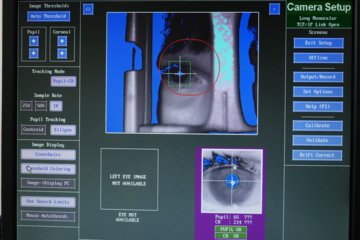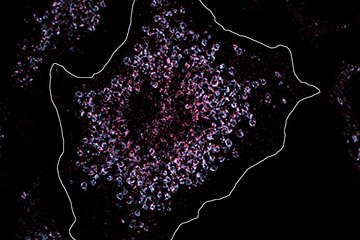IBI licenses Silibinin for the use in Cushing´s Disease
The Italian pharmaceutical company plans test the compound in clinical trials
The pharmaceutical company Istituto Biochimico Italiano Giovanni Lorenzini (IBI) obtained a license from Max Planck Innovation for the use of Silibinin in the treatment of Cushing´s disease. Based on research findings from the Max Planck Institute of Psychiatry in Munich, Germany, IBI aims to develop a non-invasive treatment option replacing conventional methods like pituitary surgery. IBI is now planning preclinical trials and initiates orphan drug application.

Cushing´s disease (CD) is a rare hormone condition caused by a tumor in the pituitary gland in the brain. Patients suffering from CD are severely impaired in their life quality and the only successful treatment up to now is pituitary surgery or administration of drugs with severe side effects. Scientists of the Max Planck Institute of Psychiatry around Günter Stalla and Marcelo Paez-Pereda, and the Helmholtz Zentrum München have discovered that Silibinin, a drug used for the treatment of toxic liver damage and mushroom poisoning with an outstanding safety profile in humans, which allows effective treatment of patients without any serious side effects, could be used in CD.
The pituitary tumor causing CD releases increased amounts of the stress hormone ACTH (adrenocorticotropin) leading to a cortisol release with major consequences. CD patients suffer from rapid weight gain, elevated blood pressure and muscular weakness. Furthermore, they are prone to osteoporosis and infections and may show cognitive dysfunction or depression.
High levels of heat shock protein increases production of stress hormone
This knowledge was used as a starting point for further investigation. The researchers aimed to find a mechanism causing this process and a way to stop it. In the course of their research they found tremendously high amounts of HSP90 in the tumor tissue of patients. This heat shock protein helps to correctly fold the glucocorticoid receptor, another protein which in turn inhibits the production of ACTH. As a result, the large number of HSP90 molecules stick to the glucocorticoid receptor, preventing it from releasing its active structure and deploying its biological functions.
In a further step the researchers found that a well known active principle called Silibinin binds to the C-terminus of HSP90 protein thus allowing glucocorticoid receptor molecules to detach from HSP90. After Silibinin treatment, tumor cells resumed normal ACTH production, tumor growth slowed down and symptoms of CD disappeared.
Using Silibinin, a plant extract from milk thistle seeds, as a HSP90 inhibitor, the researchers discovered a non-invasive treatment strategy for Cushing´s disease. In 2013, the Max Planck scientists together with the technology transfer organization Max Planck Innovation filed a patent, which has been granted in the US and is pending in the EU, covering chemical and natural compounds, including Silibinin, to treat pituitary tumors as further medical use.
Clinical tests for non-invasive treatment
IBI has developed a highly concentrated and purified form of Silibinin. The company now plans to perform clinical trials in a consortium with experienced scientists in this area and to rapidly access the market in order to enable the treatment of this rare and severe disease. “IBI is a great match for the new technology from the Max Planck Institute of Psychiatry. The company has longstanding experience in the development of new therapeutic applications and can boast a worldwide production and marketing network. Furthermore, IBI is experienced in bringing innovative products into the clinic making it a strong partner for the development of a new and non-invasive treatment option for CD patients. We are pleased to have IBI as a partner to improve the treatment of patients suffering from this rare disease”, says Doris Maugg, patent and licensing manager at Max Planck Innovation.
MB/HR












